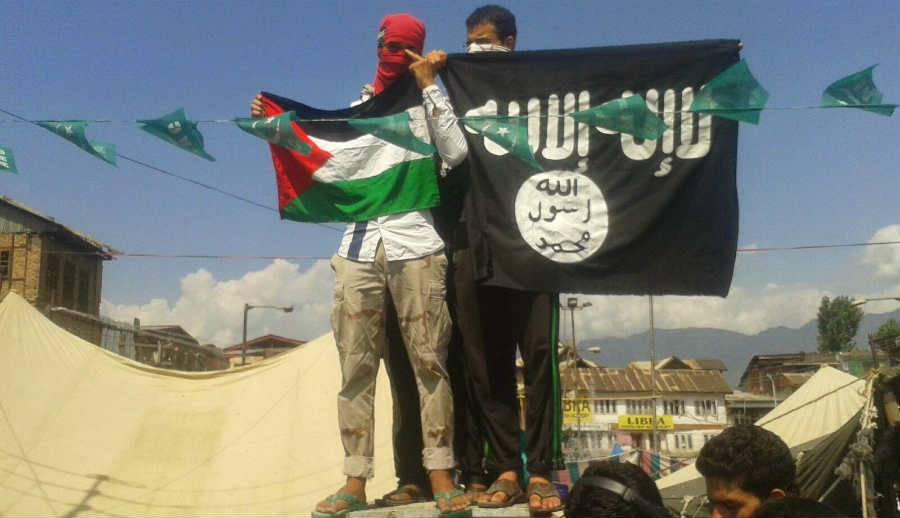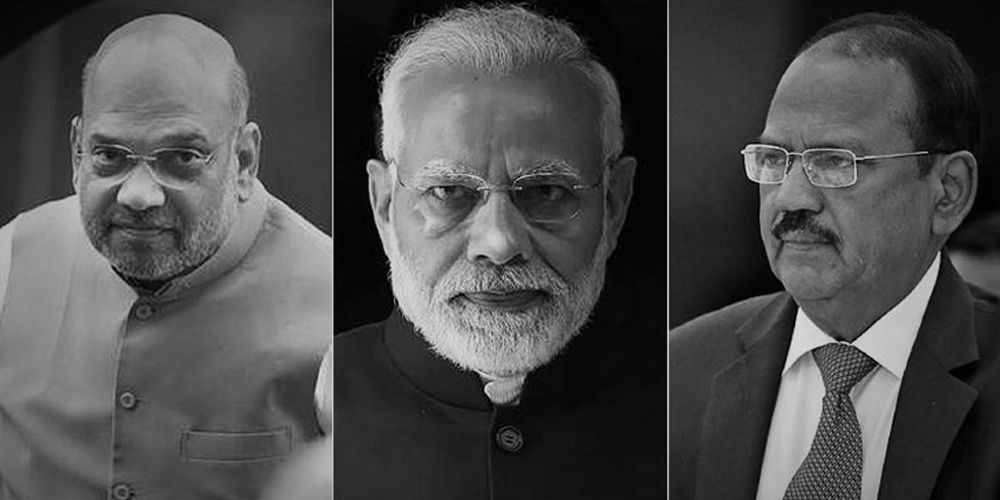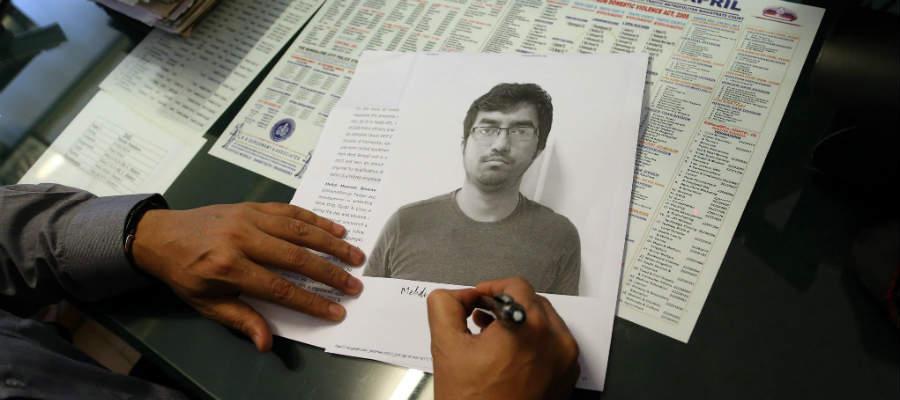BY MALOY KRISHNA DHAR
Pune bomb blast on March 13, 2010 has revived the ghastly memories of 26/11 Pakistani attack on Mumbai, nearly about 15 months ago in 2008. It is surprising that Indian political leaders and common citizen express shock, surprise and remain agitated for a few weeks and then relapse into the humdrum of daily life. There is no effort to stitch all such incidents into a pattern; which are planned in Pakistan and executed against Indian targets either by the Pakistan based tanzeems or their Indian collaborators. The Pune incident is a part of that unbroken chain of jihad against India.
There are certain considerations which require intensive examination. A couple of my Pakistani media friends have been sending warning messages that jihad war against India from Pakistan based tanzeems should not be seen as a part of proxy war to grab ‘Indian held Kashmir.’ According to them there are deep rooted conspiracies in Pakistan, between the Armed Forces, the ISI and section of political stalwarts and clerics who want to multiply the jihadist tanzeems from Punjab, PoK and even from the tribal areas and use them as auxiliary units of Pakistan Army to fight irregular wars against India and act as vanguard of the regular armed forces when real frontal war is planned against India.
I have no reason to disbelieve my media friends in Pakistan who do not want conventional or nuclear war between India and Pakistan. I have reasons to believe that the STATE OF PAKISTAN is engaged in this strategy and the latest meeting of the jihadis in Muzaffarabad and Markaz ud Dawa rally in Lahore are indicators of that very strategic policy of Pakistan. Starting with deputing the Mehsud tribals to invade Kashmir in 1947, Pakistan has depended on dual policy of direct ISI intervention and intervention through the tanzeems created by it. A third dimension has been added to the strategy after Pakistan succeeded in creating hundreds of Modules and Cells amongst sections of Indian Muslims; whose visible faces are SIMI, Indian Mujahideen and Lashkar-e-Taiba Al Alami (International).
This third dimension has been added to allow Pakistan the diplomatic deniability of any of the terror groups in Pakistan. Already there are propaganda in Pakistan and through the electronic media that Indian Muslims are now geared up for another war of liberation and creation of two more Pakistan like nations out of existing India. Hopefully, Indian leaders in Delhi are listening to these underground rumblings.
Indians have either become immune to such dastardly Pakistan sponsored attacks, which has the potential of engulfing the country, or they behave like zombies who leave their welfare to fate or at best to the snake-charmer politicians, who sing paean from time to time saying – Sab Thik Hain. After the Pune incident also P. Chidambaram, Union Home Minister, asserted that there was no intelligence failure and the state government was earlier alerted about the possibility of jihadi attack on Osho Ashram, German Bakery and the Jewish Chabard establishment. The alert was issued after the FBI informed India about David Headley’s visit to Pune and his surveying of the sensitive establishments. Pune also figured in the jihad speech of Makki, number two in the Markaz ud Dawa establishment.
It should be understood that Alert is a security exercise based on Intelligence Assessment. On the basis of alert the security wings of police arrange for physical security of the threatened vulnerable places and installations. This exercise should not be confused with actionable intelligence generation. The logical sequence of security and intelligence drill is: Intelligence assessment>>Threat determination>>Alert Notice>>Intelligence generation to buttress the intelligence assessment. In case of Pune, even in case of 26/11 incident, intelligence assessment and threat determination stages were observed by the Central IB and the State police were adequately alerted.
The next important course of action is related to intelligence generation about the likely perpetrators of the terror action through Human Intelligence and Electronic Intelligence. In case of Pune, it was known that modules of the Indian Mujahideen and Lashkar-e-Taiba were active in Kondhwa, Janwadi etc areas of Pune. There were reports of several hardliner clerics from Azamgarh being employed in local madrasas and some of the Lashkar and IM members had recently migrated from Aurangabad and Pimpri to Pune. In spite of these inputs, neither the Central IB nor the State police intelligence succeeded in generating Human Intelligence or Electronic Intelligence to decipher the nexus between the Pune plotters and their handlers in Pakistan and their planned modus operandi of the dastardly terror attack.
In simple language, there was complete intelligence blackout. None of the intelligence agencies had made any effort to penetrate the modules and cells which normally function from within the clustered Muslim areas in and around Pune and nearby towns. Such continuous failure to generate Human Intelligence and absence of sophisticated Electronic Intelligence is unpardonable. Informed Pune sources assert that the intelligence units in the city are in hibernating condition. There is no sophisticated equipment to gather electronic intelligence.
Even basic measures of physical security were not taken in adequate manner to enforce German Bakery to install CC TV and metal detector scanners. Surprisingly the important and vulnerable locality did not even have a police post to patrol the area. Only after the incident a temporary camp has been opened up. Therefore, Chidambaram’s observation that in Pune there was no intelligence failure and the attack was insidious in nature is nothing but a political cover-up of colossal state failure.
In the Pune bombing the jihadis used RDX, ammonium nitrate and petroleum hydrocarbon, possibly with electronic timer device using a mobile phone. The modus operandi and the technology were similar to serial bombings in Rajasthan and Gujarat and some of the train bombing incidents in Mumbai. However, it must be remembered that IED formulae are widely known and several Indian Muslim youths have been trained in Pakistan in the craft of manufacturing explosive devices. There is no brand right by any group. The technology is well known and widely available in the Internet. However, use of ammonium nitrate indicates that the chemical may have been locally procured and the IED was manufactured in one of the cells of the Lashkar or the Indian Mujahideen.
Several speculations are on the air about Riyaz Bhatkal being the ‘mastermind’ behind Pune blast. According to reports, Riyaz Bhatkal is in Karachi and he works in tandem with the Lashkar-e-Taiba and the mafia gang of Dawood Ibrahim. His brother Iqbal Bhatkal is reportedly in Dubai. One of the two persons detained by the Maharashtra anti-terrorism squad (ATS) in connection with German Bakery blast case had sheltered the elusive Indian Mujahideen co-founder Riyaz Bhatkal in the neighbouring town of Pimpri between 2005 and 2007. Present indications point fingers at IM, LeT and HuJI. Existence of a huge illegal Bangladeshi concentration in the clustered areas require deeper probe. Though banned in Bangladesh, HuJI is active in India.
The other question that has whipped up political debate is about the timing of the explosion. India-Pakistan secretary level talks are likely to be resumed in end February. The BJP has demanded suspension of talks on grounds of possible Pakistani hand behind the terror attack. They also quoted the Prime Minister who had earlier said that there could not be any talk with Pakistan unless all the infrastructures of terror in Pakistan were demolished. The USA also is keen to see resumption of India-Pakistan composite talks and has even said that such talks are central to a permanent solution in Afghanistan. The US, on the other hand, has undermined India’s position by liberally supplying weapons and billions in grants to Pakistan, major parts of which are used in building war infrastructure against India.
India may as well talk to Pakistan but must keep on the table the issue of dismantling terror infrastructure in the neighbouring country. Slogans are being raised in Pakistan that without solving the Kashmir problem any permanent peace can be achieved. There are points of view in India that Kashmir as a whole belongs to India and the Kashmir problem can only be solved if Pakistan vacates illegal occupation. From these diplomatic and strategic rigmaroles it is understood that this time around Indian and Pakistan would talk for the sake of talking. Engaging an adversary is good in diplomacy but not preparing the country to defend against that very enemy’s direct and proxy attack is a pointer to political and strategic bankruptcy. It is feared that the UPA government has run out of ideas and policies to fortify the country from sniper jihadi attacks to be followed by avalanche to jihadi rampage all over the country. Pune is just one of those indicators to starkly remind the country: We never learn lessons.
(Maloy Krishna Dhar retired as a Joint Director of India’s internal intelligence agency, Intelligence Bureau. He is a guest writer with Canary Trap.)


